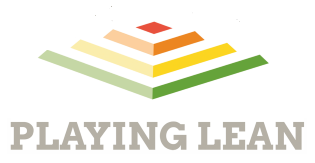BlaBlaCar is the world's leading long-distance carpooling platform. The platform is available in 22 countries, mostly in Europe. They don't own their own vehicles, but they connect drivers and passengers going in the same direction to share the cost of the journey going between cities.
This is just one of the things that differentiates them from other ride sharing companies, as well as the fact that their drivers don't make any profit, other than sharing the cost of the journey. Although they are often compared to Uber, based on their model they are more in competition with buses and trains, since the average distance of a BlaBlaCar trip is 263 kilometers.
Since the rides are long distance, the rating scale of drivers is based on their chattiness - "Bla" for not very chatty to "BlaBlaBla" for being over talkative. This is how the company, once called CoVoiturage, got its name. Based on those ratings, you can decide if you're in the mood for a quiet ride, or you want to have a more talkative journey companion.

The founder, Frédéric Mazzella, came to the idea when he was going home to visit his family in the French countryside for Christmas. He didn't have a car, and all the trains were full. After his sister picked him up, while driving, he noticed that most of the cars were empty with no one but the driver in them. Over the next 10 years and after many iterations, together with two other co-founders, they have built a successful company with a good business plan.
One of BlaBlaCar’s core values is “Fail, Learn, Succeed”. In the beginning they didn't receive any commission for their service, but they now charge a small fee for every booking. Looking for a viable business model was not easy, and it took them 5 years and six various business models to find something that was economically sustainable and still created value for customers.
One of the failed business models was providing a business-to-business service. They had over 200 companies using their platform to provide their employees with rides from home to work and back. Although this model was bringing in revenue, it wasn't on track with their initial idea since the distances of the rides were not more than 20km. They were also spending too much time and resources on implementing this, so they decided to phase it out.
Other failed models included a Premium model where a member could pay to have their post ranked first in search but it didn't seem fair to others, an advertising model which was quickly discarded because they didn't want personal data of their members being sold for commercial purposes, and a Phone Bridge model where members could hide their mobile number and pay for the phone-bridge connection. This was one of the most unreliable systems that had many problems.
The last failed model was the Event Agenda model in which event organizers could create an event page with pick-up/drop off points for attendees to travel together. Although this model lasted for several years, a lot of work went in keeping it alive with no return on investment.
The business model that stuck was one that was in correlation with trust being fundamental to BlaBlaCar. They had a situation where a ride was booked with three other passengers. Everyone showed up on time, except for one passenger who overslept and wasn't answering his phone. After getting in touch with him and offering to pick him up at his house, the passenger cancelled his ride. This wasn't fair to the driver or other passengers who had to wait, lost time and money (and trust).
Since the passengers didn't have to pay for the cost of the journey before the scheduled trip but with cash in the car, there were a lot of empty cancellations where drivers didn't know if the agreed ride was sure to happen basically an hour before the pick up. Because of this lack of commitment from the passengers and loss of trust of drivers, the company started working on a transactional model where members would pay before (trip expenses + fee) which would bring the number of cancellations to a minimum. This would also bring back the trust to the members of BlaBlaCar. This new model reduced the number of cancelled rides from 35% to less than 3%. The new model was fair to everyone and scalable which meant it could be applied internationally without a problem.
It seems that the team at BlaBlaCar has truly adopted the Build-Meausure-Learn loop, or as they call it “Fail, Learn, Succeed”, which successfully drives innovation in their company. They analyze their failures, learn from them and try to solve the problem in the end.
BlaBlaCar is one of the companies represented in the Ride Sharing Scenario. You can use this deck to expand your Playing Lean 2 game which comes with the Hospitality Industry Scenario.